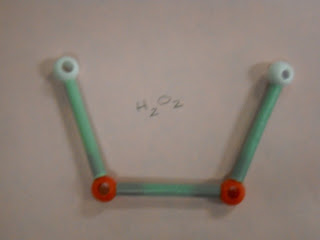
Purpose:
To determine the number of grams of copper that will be produced from an oxidation reduction reaction when you know the mass of Aluminum that reacted with a known amount of copper II sulfate pentahydrate and to compare this to the actual yield of copper.
Background Info:
1. Limiting Reactant is a reactant that is used up first and thus limits the amount of other reactants that can participate in a chemical reaction. The limiting reactant also limits the amount of product that can be formed.
2. Actual Yield is how much of the product is actually obtained.
3. Theoretical Yield is the mass of product expected from stoichiometric calculations
4. Percent Yield describes how close the actual yield is to the theoretical yield.
Hypothesis:
We think that when we mix the two together and filter it there will be a chemical reaction that makes a precipitate.
Materials:
1. 8.10g of Copper II Sulfate
2. 0.43g of Aluminum
3. 75 mL of H2O
4. Glass Stirring Rod
5. Iron Ring w/asbestos pad over it
6. Bunsen Burner
7. 100 mL Beaker
8. Flask
9. Filter Paper
10. Weighing Paper
11. Our Required Safety Gear
Procedure:
1. Obtain medium sized beaker
2. Add 75 mL of water to beaker; set-up iron clamp with asbestos pad over a bunsen burner to begin heating
3. Measure out about 8 to 10g of Copper II Sulfate Pentahydrate and record the mass in the data table. Then slowly add the crystals to the heating water.
4. With a glass stirring-rod, stir the solution until the Copper
 II Sulfate Pentahydrate is dissolved.
II Sulfate Pentahydrate is dissolved.5. While the copper Sulfate crystals are dissolving one member of the group can go and get the foil. Carefully weigh out a piece of aluminum foil that weighs between .4 and .7 grams. Record the mass into a data table.
6. Tear the foil into small pieces and carefully add it to the hot solution with continuous stirring until all the foil is placed into a beaker.
7. Stirring frequently allow the re3action to occur until you can't see any more silvery foil pieces. This will take 15 to 20 minutes so be patient. Once you can't see anymore foil pieces no matter how small, heat an additional 3 to 4 minutes, then remove from the heat.
8. Write your names around the outside edge of a filter paper weigh and record the mass in the data table.
9. Use the filter paper and your funnel to filter the residue in the beaker, catching the filtrate into the Erlenmeyer flask provided.
10. Rinse out your beaker with a small amount of water to be sure you obtained all of the product/residue.
11. Remove the filter paper from the funnel and spread it out on a paper towel to dry overnight.
12. Clean and dry the glassware. Be sure the propane is turned off and Bunsen burner disconnected and put away. Straighten up your are.
13. Upon returning the next day. Weigh the filter paper and dry residue and record that mass in the data table. Throw the filter paper and residue away.
Results:
In our lab the reaction didn't occur like everyone else' s.











